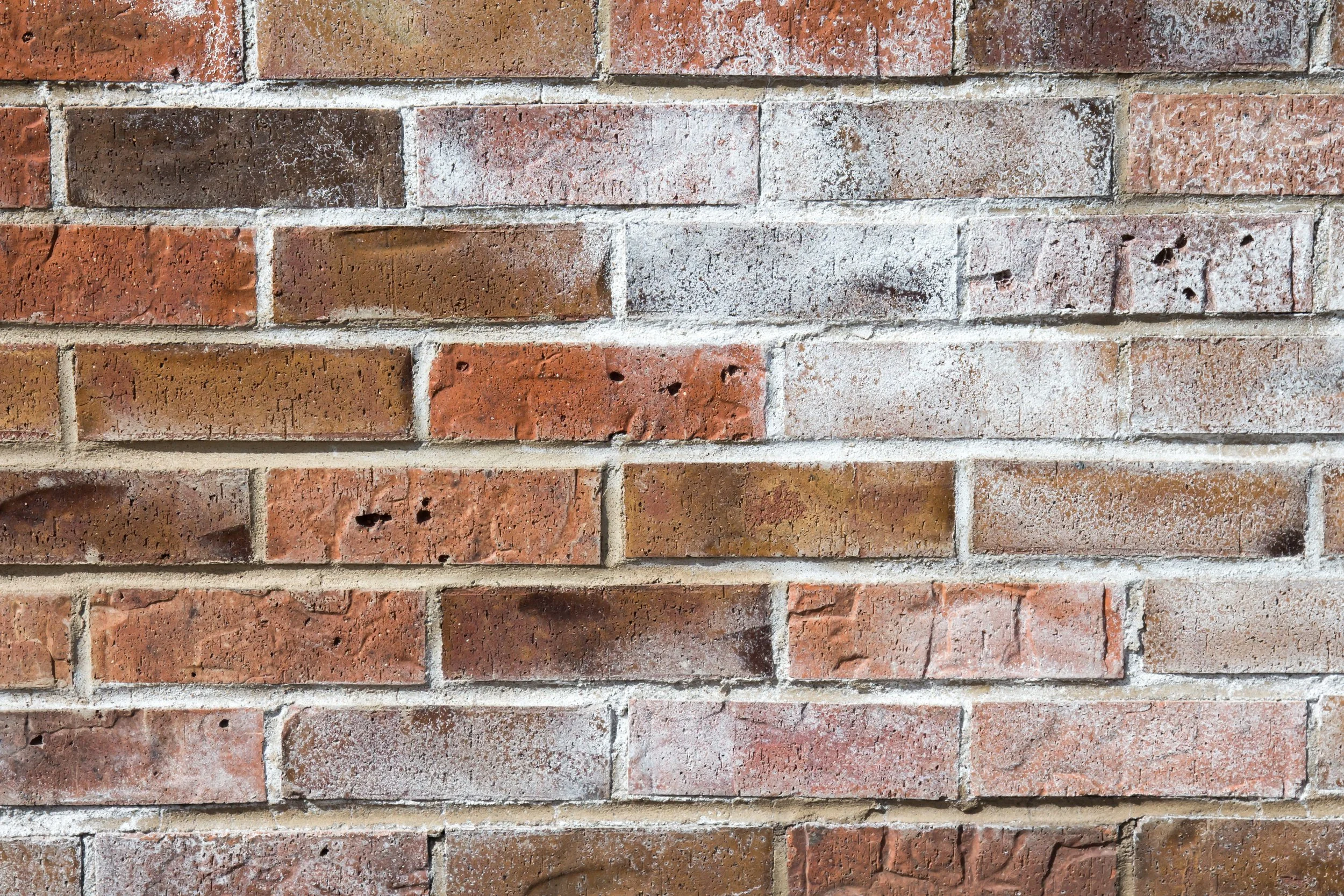What is Efflorescence?
Have you noticed a strange white powdery substance forming on the surface of your brick or concrete walls? If so, you may have seen the phenomenon known as efflorescence. This mysterious substance is sometimes mistaken for white mould and can be unsightly and leave you wondering if there's something wrong with your building's structure. In this blog post, we will delve into what efflorescence is, what causes it, and how to deal with the problem.
What is efflorescence?
Efflorescence has been an issue within the construction industry for as long as bricks and concrete have existed. Although it doesn’t pose a threat to the structure of a building, it can indicate moisture issues are present. It’s also unsightly and causes concern from homeowners.
So, what exactly is efflorescence? Efflorescence is the process of moisture pulling salt deposits in the material to the surface. It typically forms on the surface of concrete, bricks, grout and tiles. It appears as a white or greyish powdery substance and feels like flour when touched.
How does efflorescence occur?
Efflorescence occurs when water penetrates a porous material and dissolves soluble salts and minerals within the material. The water can come from a variety of sources, such as groundwater, rain or a leak. If efflorescence appears inside your house, it typically means there is an issue with waterproofing, dampproofing, or an issue with a shower, sink or pipe. The water then carries the dissolved salts to the surface and dries.
As the water evaporates, it leaves behind the salts and minerals on the surface, forming a white, powdery deposit known as efflorescence. This happens because the salts are not able to evaporate with the water and remain on the surface of the material.
The types of salts that cause efflorescence depend on the materials used in the construction of the building. Another factor is the environment in which the building is located. For example, calcium carbonate is a common salt found in efflorescence that occurs on concrete. While sodium chloride is more likely to be found in efflorescence on masonry walls located in coastal regions.
Image of a build-up of efflorescence on brickwork.
Image supplied by Karagrubis via Adobe stock images.
Where is efflorescence most likely to occur?
Efflorescence can occur on various surfaces and in different locations, but there are three common areas where it is often seen:
Masonry walls:
Masonry walls made of brick or stone are porous and can absorb water from the surrounding soil, rainwater, or other sources. This water can dissolve soluble salts and minerals within the masonry and cause efflorescence to form on the surface. Masonry walls are also prone to cracking, which can allow water to penetrate the structure and lead to the formation of efflorescence.
Concrete surfaces:
Concrete is created from cement, which contains soluble salts that can cause efflorescence. In addition, concrete surfaces are often exposed to rainwater. This rainwater can dissolve the salts and minerals within the material and lead to the formation of efflorescence on the surface. Concrete surfaces that are not cured or sealed are also more prone to efflorescence.
Basement walls and floors:
Basements are often located below ground level and are susceptible to high levels of moisture. This moisture can seep through the walls and floors which is something our engineers see often. This moisture dissolves the soluble salts and minerals within the concrete or masonry material causing efflorescence to form. Basements that are not properly waterproofed or ventilated are more likely to develop efflorescence.
How poor moisture management plays a major role in efflorescence
Efflorescence is bound to occur when there is a problem with the building's moisture management. If water is able to penetrate the building's structure and is not drained or dried out, it can dissolve the soluble salts and minerals within the material. Thus leading to the formation of efflorescence on the surface.
Even though efflorescence is not a risk by itself, it can indicate serious issues if it forms inside a dwelling. Efflorescence forms on materials that will either be unaffected or take a long time to be affected. However, if the source of moisture also comes into contact with materials such as timber or steel, there may be costly structural damage. It can cause swelling, cracking, decay and corrosion leading to many major issues.
Efflorescence on concrete can indicate concrete cancer (rusted reinforcement) and efflorescence on masonry can indicate rusted brick ties. Both can lead to costly repairs.
Image of efflorescence build-up on a pier under a house.
Image supplied by Arbiter Group.
Tips and tricks on avoiding and getting rid of efflorescence
When it comes to discussing ways efflorescence can be avoided, recommendations are more specific to preparation prior to anything being constructed. This means that the best way to avoid efflorescence is to get it right from the beginning. Ensure the right materials and methods are used before the project is completed.
Here are some steps you can take in an attempt to avoid efflorescence:
Use clean water: When mixing concrete, use clean water that is free of minerals and salts. However, by doing this, there is no guarantee that efflorescence will be avoided.
Cure concrete: Properly curing concrete is critical in attempting to prevent efflorescence. Make sure to follow the manufacturer's instructions for curing. This includes allowing the concrete to cure for the recommended amount of time. Again, there is no guarantee that efflorescence will be avoided.
Install proper drainage. Ensure that water does not collect or pool around your concrete, brick or stone structures. Proper drainage is crucial in preventing the accumulation of salts and minerals that can cause efflorescence.
A negative pressure membrane can be applied to the surface of concrete, brick, or stone to prevent water from penetrating the surface and depositing salts and minerals.Regular cleaning of the surface can help to remove any mineral buildup that may cause efflorescence.
Use high-quality building materials, including clean aggregates and cement, to prevent efflorescence. This will ensure that your structures remain strong and durable for years to come.
If you are noticing efflorescence build up on your brickwork or concrete, there are a few methods you can follow to remove it. The best way to remove efflorescence depends on the severity of the problem and the type of surface affected.
The first and most important step would be to identify the source of the moisture. As we have already discussed, efflorescence occurs when water enters a porous material and then evaporates. To prevent further efflorescence, you need to address the source of the moisture. Having a forensic engineer inspect will help find the source of this moisture and provide recommendations on how to remedy the situation.
Some other steps you could take are:
Brush or scrape away the loose efflorescence
Use a solution to dissolve the remaining efflorescence
Apply a negative pressure membrane to prevent further efflorescence
Image of efflorescence in an underground carpark.
Image supplied by Arbiter Group.
How can Arbiter Group help you?
If efflorescence is a problem you're facing in your home and are struggling to find the root cause of it, our engineers can help put your mind at ease. Our forensic engineers can assist you in conducting an inspection and providing a comprehensive report detailing the findings and recommendations to remedy the issue. Contact us today to discuss your needs and see how we can help you.




